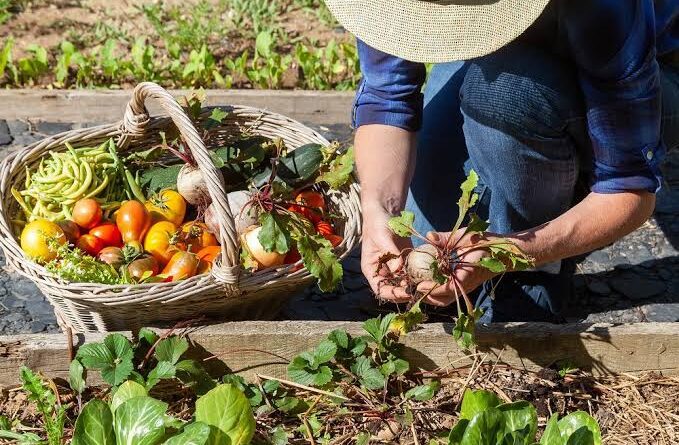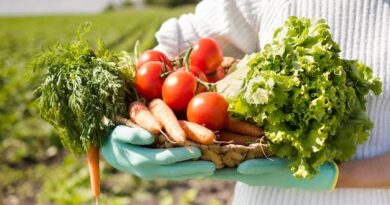Guides to Seasonal Planting and Harvesting
Seasonal planting and harvesting guides are like nature’s calendar for growing fruits and vegetables. They tell us when it’s the best time to plant and when to reap the rewards of our hard work. These guides are like secret maps that help us navigate the changing seasons and ensure a bountiful harvest.
1. Spring: Spring is the season of new beginnings. It’s when the world wakes up from its winter slumber. In spring, we plant crops like peas, carrots, and lettuce. These veggies love the cool weather and grow quickly. Flowers like tulips and daffodils also bloom in spring, adding color to our gardens.
2. Summer: Summer is the time for sun and warmth. It’s perfect for planting tomatoes, cucumbers, and peppers. These veggies thrive in the heat. Many fruits, such as strawberries and blueberries, ripen in the summer sun. It’s a great time for outdoor picnics and enjoying the fruits of our labor.
3. Fall: Fall brings cooler temperatures and falling leaves. It’s a time to harvest many of the crops we planted in spring and summer. We gather pumpkins, apples, and corn. Fall is also a good time to plant garlic and onions. These plants can grow through the winter and be ready for harvest in spring.
4. Winter: Winter is a quieter time in the garden. Most plants don’t grow during the cold months. But some hardy vegetables like spinach and kale can survive the winter and be harvested. It’s also a good time to plan for the next year’s garden by studying planting guides and choosing what to grow when the frost melts away.
5. Year-Round: Some plants, like herbs (basil, rosemary, etc.), can be grown year-round indoors or in a greenhouse. This means you can enjoy fresh herbs even in the dead of winter.
Tips for Success
1. Know Your Zone: Different regions have different climates. Look up your planting zone to know the best times for planting in your area.
2. Follow Instructions: Seed packets often come with planting instructions. Follow them carefully for the best results.
3. Companion Planting: Some plants grow better together. For example, tomatoes and basil make great companions. They can protect each other from pests.
4. Keep an Eye on the Weather: Weather can be unpredictable. Be prepared to cover your plants if unexpected frost or storms are on the way.
5. Be Patient: Gardening takes time. Don’t be discouraged if your plants don’t grow overnight. Keep tending to them, and you’ll be rewarded.
In addition, seasonal planting and harvesting guides are like nature’s roadmap to a fruitful garden. By understanding the best times to plant and harvest, you can enjoy a diverse range of fresh fruits and vegetables throughout the year. Gardening doesn’t have to be complicated; it’s a journey that connects us to the cycles of nature in the simplest and most rewarding way.
Read Also: Chihuahua Dogs Description and Complete Care Guide
Guides to Seasonal Planting and Harvesting

Here’s a simplified guide to seasonal planting and harvesting:
1. Spring
1. What to Plant: In spring, plant cool-season crops like peas, carrots, lettuce, and radishes. These vegetables love the mild temperatures of spring.
2. Planting Tips: Sow seeds directly in the garden or use seedlings. Make sure the soil is well-drained and enriched with compost.
3. Harvesting: As these plants grow, start harvesting when the vegetables are mature. For lettuce, pick the outer leaves first.
2. Summer
1. What to Plant: In summer, it’s time for warm-season crops like tomatoes, cucumbers, peppers, and zucchini. These plants thrive in the heat.
2. Planting Tips: Plant seedlings or transplants, and give them plenty of sun. Water regularly to keep the soil moist.
3. Harvesting: Harvest when the fruits are ripe. Tomatoes should be firm but slightly yielding, while cucumbers should be crisp.
3. Fall
1. What to Plant: In fall, plant crops like pumpkins, apples, and corn. Also, consider planting garlic and onions for next year.
2. Planting Tips: Make sure your soil is well-prepared with compost. Some plants can withstand cooler temperatures.
3. Harvesting: Harvest your fall crops when they reach maturity. Pumpkins should have a deep color and sound hollow when tapped.
4. Winter
1. Winter Planting: While most plants don’t grow in winter, you can still plant hardy vegetables like spinach and kale.
2. Indoor Gardening: Grow herbs like basil, rosemary, and thyme indoors or in a greenhouse year-round.
5. General Tips
1. Know Your Zone: Find your planting zone to understand your local climate and planting schedule.
2. Follow Instructions: Read seed packets for specific planting instructions and spacing.
3. Companion Planting: Some plants grow better together and deter pests. For example, plant marigolds with tomatoes to keep away insects.
4. Weather Awareness: Be prepared for unexpected weather changes. Cover plants during frost or storms.
5. Patience: Gardening takes time. Be patient, water consistently, and provide proper care.
Remember, seasonal planting and harvesting guides are like a recipe for a successful garden. By following these simple steps, you can enjoy fresh, homegrown produce throughout the year.
Read Also: Bernedoodle Dogs Description and Complete Care Guide
Importance of Seasonal Planting and Harvesting Guide

Seasonal planting and harvesting guides are crucial for several important reasons:
1. Optimizing Crop Growth: These guides help gardeners and farmers make informed decisions about when to plant specific crops. Planting at the right time ensures that crops can grow in the most favorable conditions, leading to better yields and quality.
2. Preventing Crop Loss: Understanding the optimal planting and harvesting times helps protect crops from adverse weather conditions, such as frost, excessive heat, or heavy rains. By avoiding these risks, the chances of crop loss are significantly reduced.
3. Resource Efficiency: Following seasonal guides promotes efficient resource use. It minimizes the need for excessive watering, fertilizers, and pesticides because plants are more likely to thrive when planted at the right time, reducing waste and environmental impact.
4. Consistent Food Supply: Seasonal planting and harvesting ensure a continuous and diverse food supply throughout the year. Different crops thrive in different seasons, so by following the guides, we can enjoy a variety of fresh produce year-round.
5. Cost Savings: Growing crops according to the seasons can save money on energy costs. For example, heating a greenhouse in winter to grow summer crops can be expensive. Seasonal guides encourage cost-effective and sustainable practices.
6. Reducing Food Miles: When we grow and harvest crops locally and seasonally, it reduces the need for long-distance transportation. This not only lowers greenhouse gas emissions but also supports local economies.
7. Preserving Biodiversity: Seasonal planting encourages the cultivation of diverse crops. This diversity is essential for maintaining healthy ecosystems, preserving heritage varieties, and reducing the risk of monoculture-related issues.
8. Educational Value: Seasonal planting and harvesting guides provide valuable knowledge about the natural rhythms of the environment. This information can be passed down through generations, fostering a deeper connection to the land.
9. Healthy Eating: Seasonal produce is often fresher and more nutritious since it spends less time in transit and storage. Eating what’s in season can promote a healthier diet.
10. Climate Adaptation: With climate change affecting weather patterns, these guides become even more critical. They help farmers and gardeners adapt to shifting growing conditions by adjusting planting and harvesting schedules accordingly.
In summary, seasonal planting and harvesting guides play a vital role in sustainable agriculture and gardening practices. They contribute to food security, resource efficiency, and environmental conservation while promoting healthier eating habits and educating individuals about the natural world around them.
Read Also: Garbage Bags: A Step-by-Step Guide









